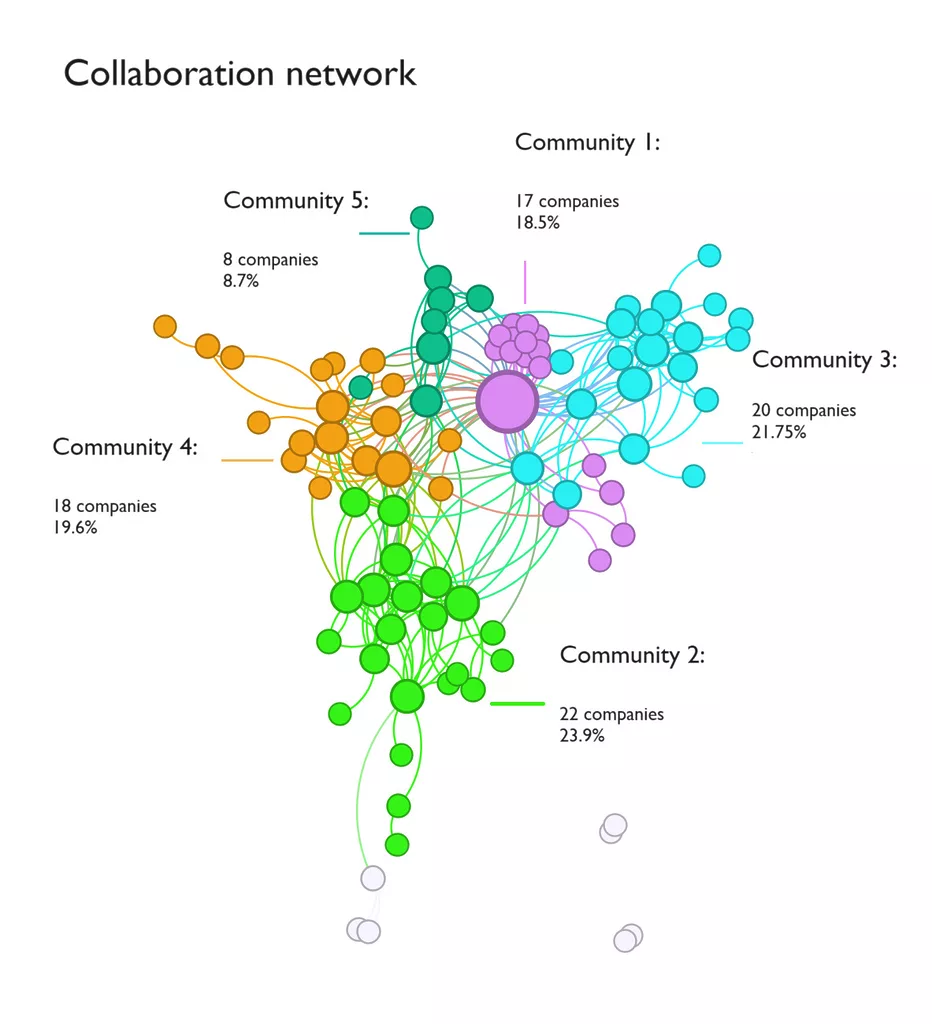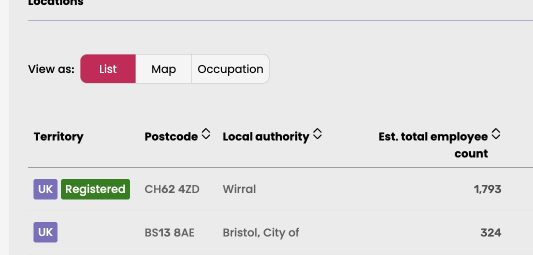There are lots of things about quantum physics that we do not know yet. However, that has not stopped us from applying it to new technologies. From HealthTech applications to atomic clocks, quantum-powered innovation changes the way we engage with the world. As a result of this, the quantum economy contributes £1.7bn in GVA to the UK economy and employs an estimated 20,000 people, while also showing huge amounts of growth.
Grant funding for quantum R&D has been critical for this outcome. Our Quantum Economy RTIC counts 562 companies, 157 of these raised 311M in Innovate UK grants.
This is not breaking news. We already knew that quantum technologies receive lots of funding, so we decided to dive deeper. Interestingly, Innovate UK grants can be requested by a consortium. This means that we can identify groups of companies that tend to work more with each other than with the rest.
We found 5 collaboration communities that define the groups of companies leading quantum innovation. Let’s take a closer look.
How we did it
First, we took all the companies in our Quantum Economy RTIC and checked which ones had received a grant from Innovate UK. Then, for those that received a grant, we looked for the ones that received it in partnership with one or more than one company—92 in total.
It is interesting to see that these 92 companies raised 286M in grants. This is 92% of the total raised, suggesting that consortium grants are responsible for most of the funding achieved. Ultimately, we ran community detection analysis over the collaboration data.
The results are visualised on the graph below. The bubbles in the graph represent the 92 companies. The size of the bubbles shows the total number of collaboration grants won by a company, and the colour represents the community it was identified into. The links between the bubbles show whether two companies have ever received a grant in partnership. The bubbles in white represent companies identified in a non significant community .

This analysis not only allows us to see how companies collaborate in quantum R&D, but can also tell us which communities are more effective at raising funding. The graph below shows the aggregate total funding received by companies in each community since 2004.
In this case, we learn that community 4 raised considerably more funding than the rest. The data also tells us that companies in community 4 were especially successful during 2023’s investment rounds. They raised 43.8 million in 2023, almost 50% of all investment secured by this community.
We also find that companies developing key materials for the the quantum economy, like Siver Photonics or IQE, won significantly more funding than others. This suggests that securing and diversifying materials for quantum technologies is currently a priority from public funding bodies.
Where are the communities
From previous work, we know that research communities are not necessarily geographically adjacent. Some may be disperse. Either way, finding out the geographical spread of these communities represents an opportunity for policy makers, investors and other researchers to empower those that make the communities possible, and those that can make them grow.
In this case, we can see how the smallest community, community 5, is located between Bristol, Cambridge and London. Thinking about ways to encourage the collaboration between community 5 with other strong communities present in the area could contribute to the strengthening of the innovation structure.
What have we learned
We’ve learnt that:
- Research consortiums tend to be more successful at winning research grants
- Quantum tech companies organise in 5 collaboration communities
- There is an investment gap between these communities.
These are all key findings, but we can still dig deeper.
Do companies in a community tend to research the same topics? How do universities play a role? Do they cluster? These are questions that we would like to explore in the future.


